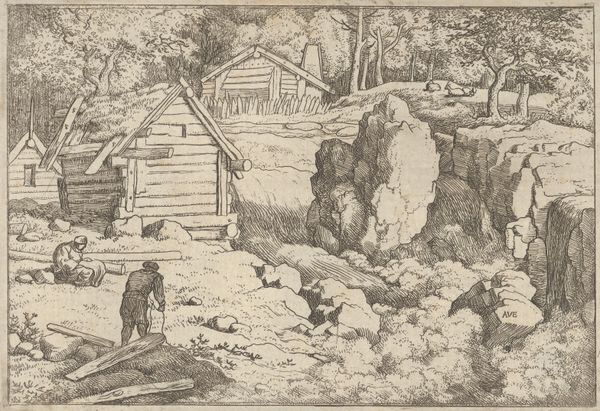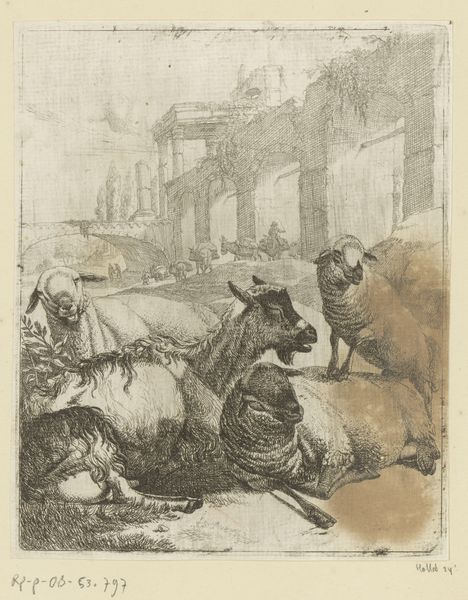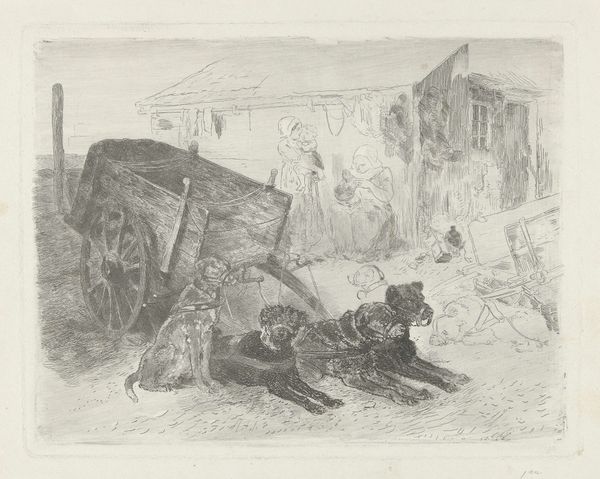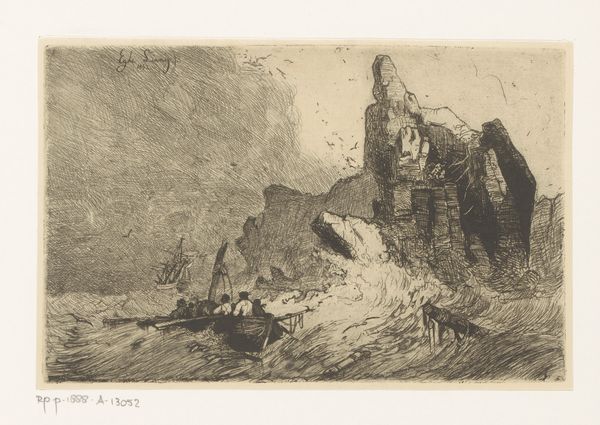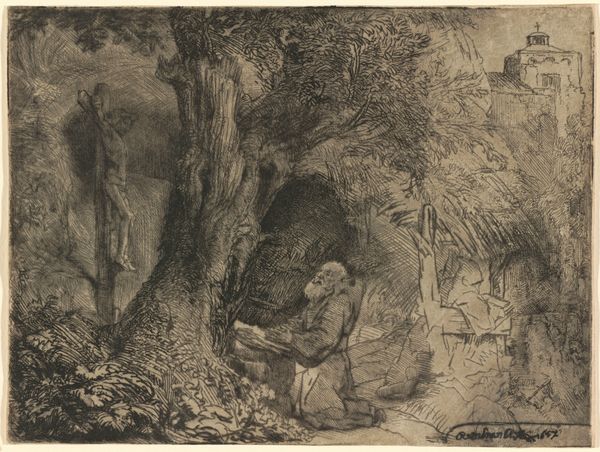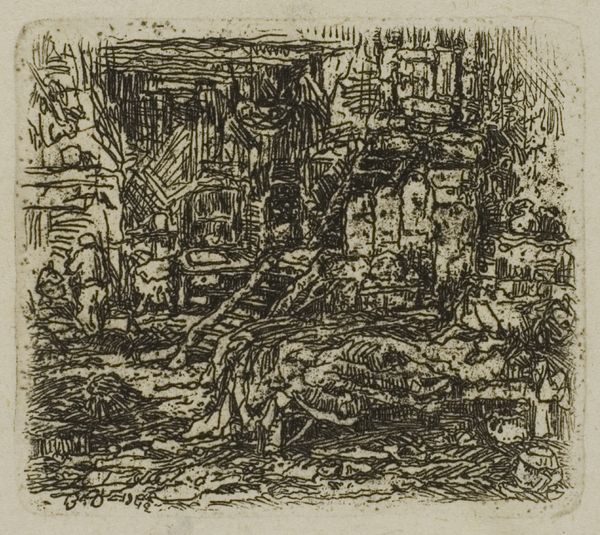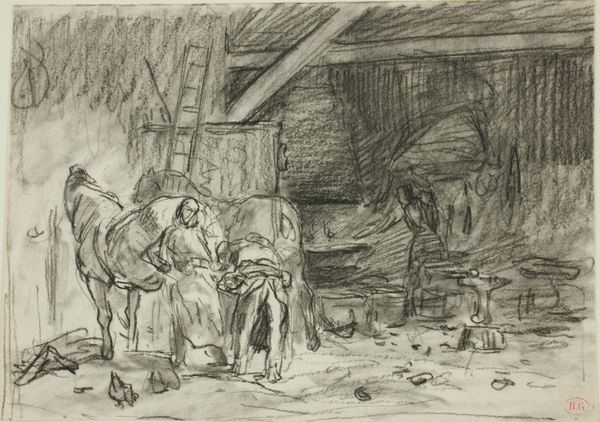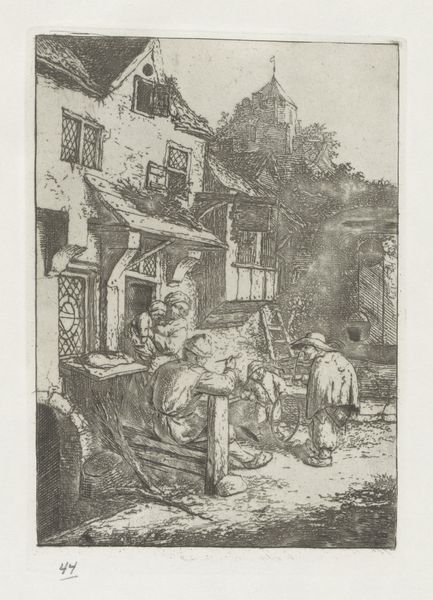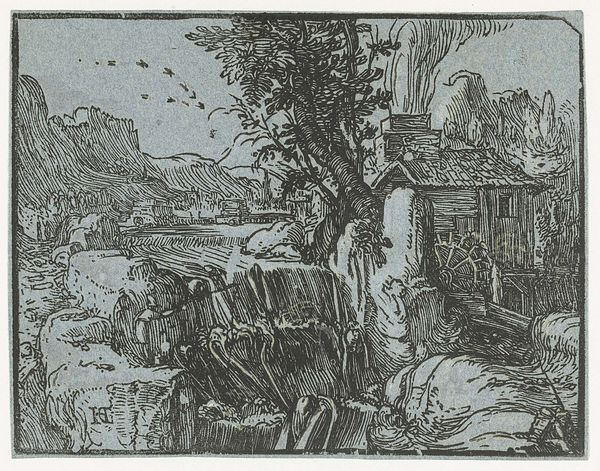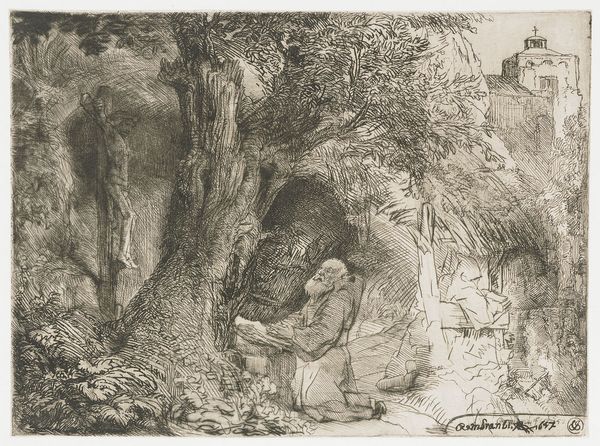
The Guardians of the House, or the Acrobat's Companions c. 1877
0:00
0:00
drawing, print, etching, paper
#
drawing
# print
#
impressionism
#
etching
#
landscape
#
charcoal drawing
#
paper
#
genre-painting
#
charcoal
#
realism
Dimensions: 86 × 115 mm (image/plate); 157 × 227 mm (sheet)
Copyright: Public Domain
Editor: We are looking at "The Guardians of the House, or the Acrobat's Companions" by Félix Hilaire Buhot, created around 1877. It's an etching printed on paper, currently at the Art Institute of Chicago. It depicts a wagon, some animals, and a couple of dogs in what seems like a quiet moment. There's a real sense of stillness and perhaps even vulnerability to it. What catches your eye about this piece? Curator: Well, given the time and Buhot’s associations with Realism, I immediately consider the social context. This isn’t just a charming scene; it’s a glimpse into the lives of those on the fringes of society. Consider the title, "Guardians of the House." Who are these guardians? The dogs? The donkey? Perhaps Buhot is subtly highlighting the role animals played in these nomadic communities. Editor: That's fascinating. So, you see the 'house' as symbolic, less about a physical structure and more about a way of life? Curator: Exactly. How was "home" redefined by those living outside conventional society in 19th-century France? The print's rough, almost unfinished quality, speaks to a raw, unsentimental view of these lives. These weren't romanticized travellers. Instead, Buhot shows the everyday reality, hinting at the socio-economic conditions that led people to this way of life. How do you think contemporary audiences viewed imagery like this? Editor: Probably with a mixture of pity and judgment, perhaps? The depiction does feel honest and avoids any heroic framing. The focus is really on the animals too which shifts the attention from humans. Curator: Precisely, and that is Buhot’s clever manoeuvre. He gives agency to animals on the margin which helps highlight their societal position relative to working humans in that time. I hadn’t really considered the impact on animals of living outside conventional structures! Editor: Me neither! It's so interesting how this seemingly simple scene can open up so many questions about social structure and roles. Curator: Exactly. That’s the power of art: it reflects and questions society, even in a small etching like this. Thanks for making me re-examine this artwork with fresh eyes.
Comments
No comments
Be the first to comment and join the conversation on the ultimate creative platform.

